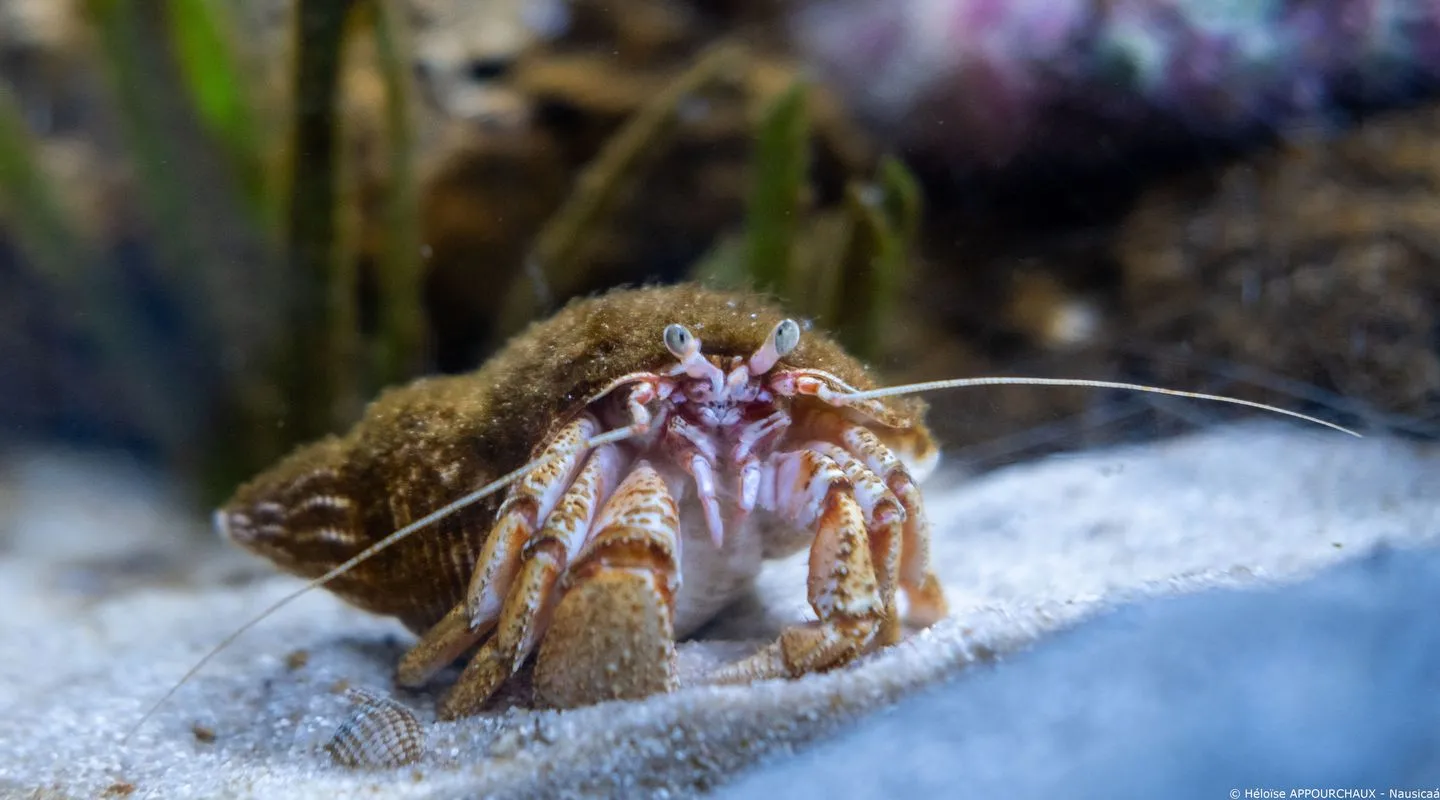Where is the animal to be found?
The hermit crab lives mainly along the seashore down to a depth of 140 m, on sandy and rocky seabeds and in Zostera meadows (aquatic plants).
How can it be recognised?
Like all decapods, the hermit crab has 10 legs. The three front pairs, including its two claws, are used to move around. Its second-to-last pair of legs is used to hold on to its shell, and its last pair of legs is used to hold on to the central axis of its shell.
Its right claw is larger than the left. It also uses it to block the entrance to its shell when in danger. Furthermore, the hermit crab likes companionship; it sometimes shares the surface of its shell with one or two anemones. Their stinging tentacles act as a deterrent. In return, they feed on their host's food scraps.
What is distinctive about it?
The hermit crab has a carapace but it is incomplete; its naked abdomen makes it vulnerable. To protect itself, there is nothing like a gastropod shell into which it crawls backwards.
It is the largest and most common hermit crab in north-western Europe.








